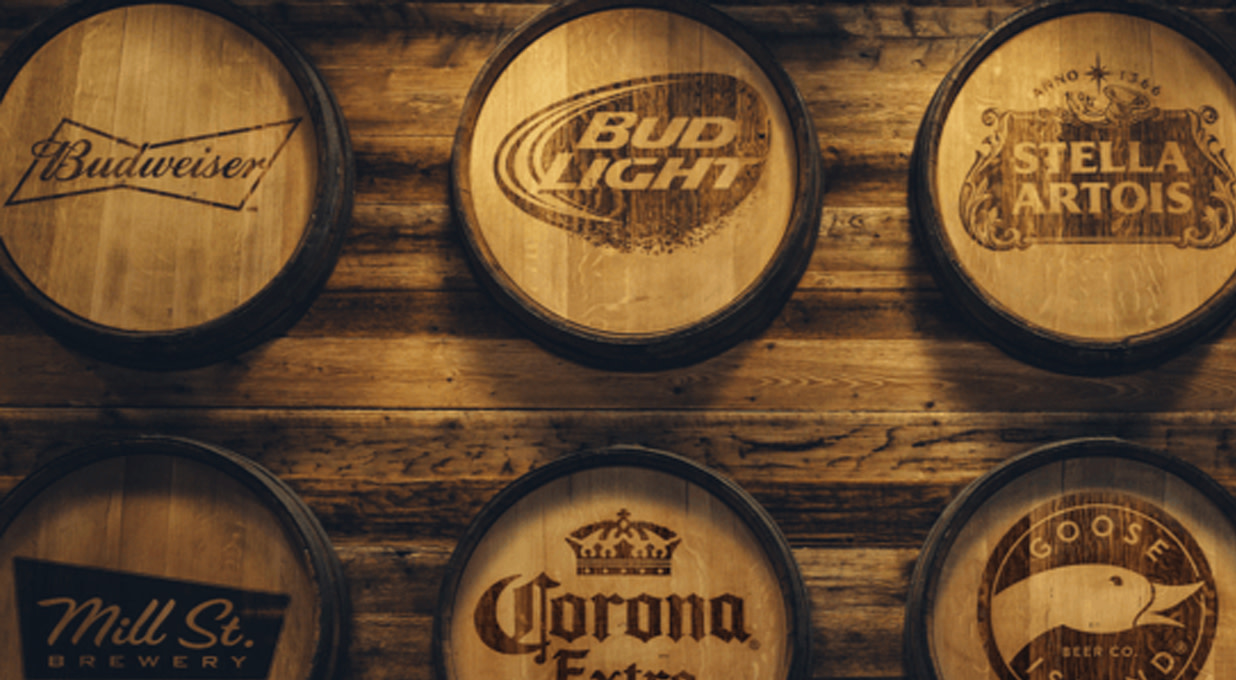AB InBev reported fourth-quarter organic revenue growth of 3.4% to $14.8bn, ahead of market forecasts. Growth was driven entirely by higher average selling prices, which more than offset a 1.9% decline in volumes.
Underlying operating profit rose 12% to $3.8bn in the final quarter. This was helped by the ongoing shift to premium beer and a tight grip on operational costs.
Free cash flow improved by $2.5bn to $11.3bn over the full-year, due to improved profit and lower capital expenditure. Net debt fell from $67.6bn to $60.6bn at year-end.
In 2025, underlying cash profit (EBITDA) is expected to grow between 4-8% (up 8.2% in 2024), in line with the group’s medium-term target.
A full-year dividend of €1.00 per share has been announced, up 22%. By 21 February 2025, around $0.8bn of the current $2.0bn share buyback programme had been completed.
The shares rose 7.8% in early trading.
Our view
AB InBev’s fourth-quarter results beat market expectations, with stronger pricing helping to deliver record revenue. That’s being driven by a continued shift from consumers towards more premium and profitable beers, a trend which looks set to continue.
Performance in the US is gaining momentum as the memory of the controversial and poorly received Bud Light marketing campaign fades into the past. The decline in sales in the aftermath of this campaign has created easy comparable periods, and AB InBev’s now seeing the benefit of this. Brands like Michelob Ultra and Busch Light are helping the group claw back some market share in the region.
Input cost inflation continues to ease. Alongside production efficiencies, profitability is improving and should continue to do so as long as the group can keep pushing modest price increases onto customers. We think this looks achievable given the strength and diversity of the group’s brands.
In other developed markets like Europe, a trend towards more premium products presents opportunities to help boost margins further. The group owns iconic names like Budweiser, Stella Artois, and Corona, the latter of which is growing at double-digit rates outside of its home country of Mexico.
Footholds in less-developed markets from Latin America to Sub-Saharan Africa mean there's scope for huge volume growth in the years ahead. Premiumisation is a trend that's making its way into these regions too. Growth in Brazil and Columbia was driven by more expensive brands.
Weakness in Argentina and China is weighing on performance. These end markets remain soft, plagued by their own economic troubles. Regardless, the group’s continuing to invest in the regions in preparation of a rebound. We’re optimistic that things will pick up again, but it's difficult to map how long it’ll be before this happens. Until then, it’s likely to hold back overall performance.
Our biggest bugbear remains the balance sheet, which still carries too much debt. Although good progress has been made recently, net debt is still sitting at around 2.9 times cash profit (EBITDA), a long way from the company's target of 2.0 times. We’d like to see continued focus on bringing this down to more palatable levels, as the payments on debt in the current high-rate environment aren’t small.
AB InBev's enviable portfolio of brands and huge global footprint means it's got a finger in just about every pie. Long-term growth prospects shouldn't be dismissed, but volume growth is proving harder than expected to come by as certain regions continue to weigh down overall performance. Some of this looks priced into the valuation, which is sitting below the long-run average, but further struggles ahead can’t be ruled out.
Environmental, social and governance (ESG) risk
The food and beverage industry tends to be medium-risk in terms of ESG though some segments like agriculture, tobacco and spirits fall into the high-risk category. Product governance is a key risk industry-wide, especially in areas with strict quality and safety requirements. Labour relations and supply chain management are also industry-wide risks, with other issues varying by sub-sector.
According to Sustainalytics, AB InBev’s management of ESG risk is strong.
In 2022, 77% of the group’s products were in returnable packaging or made from majority-recycled content. The group aims to up this to 100% by 2025. The percentage of women at each level of the business has increased in recent years, however, it is still significantly below 50% representation.
AB InBev key facts
All ratios are sourced from Refinitiv, based on previous day’s closing values. Please remember yields are variable and not a reliable indicator of future income. Keep in mind key figures shouldn’t be looked at on their own – it’s important to understand the big picture.
This article is not advice or a recommendation to buy, sell or hold any investment.No view is given on the present or future value or price of any investment, and investors should form their own view on any proposed investment.This article has not been prepared in accordance with legal requirements designed to promote the independence of investment research and is considered a marketing communication.Non - independent research is not subject to FCA rules prohibiting dealing ahead of research, however HL has put controls in place(including dealing restrictions, physical and information barriers) to manage potential conflicts of interest presented by such dealing.Please see our full non - independent research disclosure for more information.


